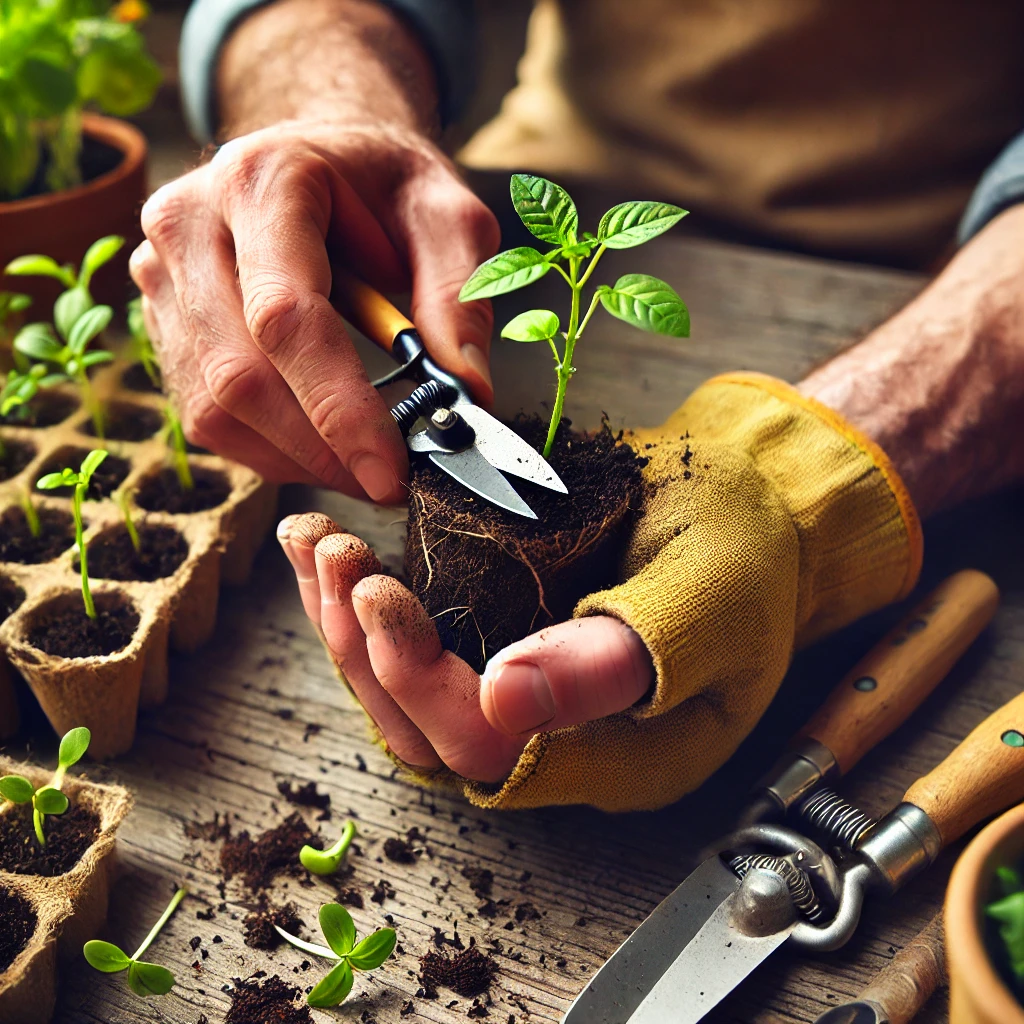Multiplication Techniques of Plants
Plant multiplication, or plant propagation, is the process of creating new plants from a variety of sources, such as seeds, cuttings, or specialized plant structures. This technique allows gardeners, horticulturists, and farmers to reproduce plants efficiently and in large numbers. There are two main methods of plant multiplication: sexual and asexual reproduction. Each method has its own unique techniques and advantages.
1. Sexual Propagation (Seed Propagation)
Sexual propagation involves the use of seeds to produce new plants. Seeds are the product of fertilization between male and female reproductive organs in flowers. The new plants produced from seeds are genetically different from the parent plant due to the combination of genetic material from both parents. This type of reproduction is often used for plants in the wild, as it ensures genetic diversity.
Steps in Seed Propagation:
- Selection of Seeds: High-quality, healthy seeds are selected. Some plants require seeds to undergo a process known as stratification (a period of cold) or scarification (breaking or softening the seed coat) to germinate.
- Planting: The seeds are planted in appropriate soil or seed trays, with the right depth depending on the seed size. The soil should be kept moist but not waterlogged.
- Germination: Seeds begin to sprout under optimal temperature, light, and moisture conditions. Care should be taken to provide appropriate environmental conditions for successful germination.
- Transplanting: Once seedlings are large enough, they can be transplanted into larger containers or the garden.
Seed propagation is commonly used for vegetables, flowers, and trees, though it may not always be the best method for producing plants identical to the parent plant, especially in the case of hybrid varieties.
2. Asexual Propagation
Asexual propagation (or vegetative propagation) involves producing new plants without the use of seeds. This method uses vegetative parts of a plant, such as stems, leaves, or roots, to generate new individuals. The new plants are genetically identical to the parent, a process known as cloning.
Techniques of Asexual Propagation:
- Cuttings: One of the most widely used methods, cuttings involve taking a part of a plant (usually a stem, leaf, or root) and placing it in a growing medium to develop roots. Stem cuttings from plants like roses, geraniums, or hibiscus are most commonly propagated this way.
- Procedure: A healthy stem is cut just below a leaf node, and the cutting is placed in a container of soil or water. It may be treated with rooting hormone to promote faster root development. After a period of time, the cutting will grow roots and can be planted as a new individual.
- Layering: Layering involves inducing a stem to develop roots while it is still attached to the parent plant. This method is often used for plants that are difficult to root from cuttings, such as blackberries or grapevines.
- Procedure: A stem is bent down to the ground and buried in the soil, leaving the tip exposed. Over time, roots will develop at the buried section, and the new plant can be separated from the parent plant.
- Division: This method involves dividing a plant into multiple sections, each containing roots and shoots. Plants like lilies, hostas, and irises are commonly propagated through division.
- Procedure: The plant is dug up, and the root ball is carefully divided into smaller sections. Each section is replanted, ensuring that each division has enough roots to survive.
- Grafting: Grafting involves joining the tissue of two different plants to grow as one. This method is particularly useful for fruit trees and ornamental plants, such as roses. The upper part (scion) of one plant is grafted onto the rootstock of another plant.
- Procedure: A clean cut is made on both the scion and the rootstock, and they are carefully joined together. The grafted plant is then nurtured until the scion establishes itself on the rootstock.
- Micropropagation (Tissue Culture): This highly advanced method is used for propagating plants in a sterile environment. Small pieces of plant tissue, often from the growing tips or buds, are placed in nutrient-rich culture media to promote growth.
- Procedure: The plant tissue is sterilized, cut into small pieces, and placed in a controlled environment (usually a petri dish or test tube) where it is provided with nutrients, light, and temperature control. The tissue will grow into small plantlets, which can later be transferred to soil.
3. Advantages and Disadvantages of Each Method
- Sexual Propagation (Seed Propagation)
- Advantages: Seeds are inexpensive and widely available. They promote genetic diversity, which can lead to healthier plants. This method is often necessary for producing new cultivars or hybrids.
- Disadvantages: It can take longer for plants to reach maturity. The offspring may not be identical to the parent plant, especially in hybrid varieties.
- Asexual Propagation
- Advantages: Asexual propagation results in genetically identical plants, ensuring the traits of the parent plant are maintained. It is a faster method of reproduction for many species.
- Disadvantages: Some methods, like grafting and micropropagation, require specialized knowledge and equipment. Asexual propagation may not always be possible for certain plants, and there is a risk of disease transmission through cloned plants.
Conclusion
Plant multiplication is essential for maintaining the diversity and continuity of plants, both in the natural world and in cultivated environments. Whether using seeds for genetic diversity or employing asexual methods like cuttings or grafting for rapid reproduction, each technique offers distinct advantages suited to different types of plants and growing conditions. By understanding and utilizing these various methods of propagation, gardeners and horticulturists can efficiently cultivate plants, preserving desirable traits and enhancing biodiversity.

